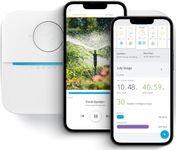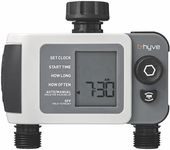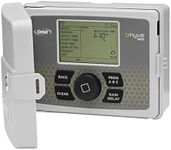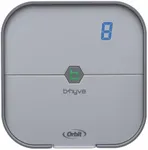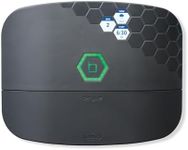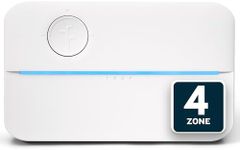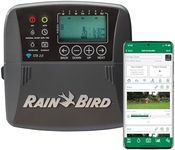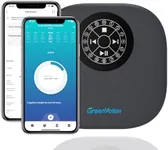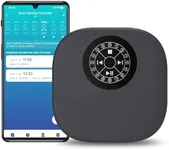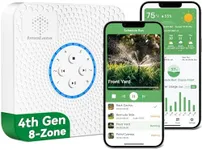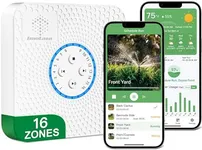Buying Guide for the Best Smart Sprinkler Controllers
Choosing the right smart sprinkler controller can make a significant difference in maintaining a healthy lawn and garden while conserving water and reducing utility bills. The right controller will automate your watering schedule based on weather conditions, soil type, and plant needs, making lawn care easier and more efficient. Here are some key specifications to consider when selecting a smart sprinkler controller and how to navigate them to find the best fit for your needs.ZonesZones refer to the number of separate areas that the sprinkler controller can manage independently. This is important because different areas of your garden or lawn may have different watering needs. Controllers typically range from 4 to 16 zones. If you have a small yard with uniform watering needs, a controller with fewer zones will suffice. For larger yards with diverse plant types and watering requirements, opt for a controller with more zones to ensure each area gets the appropriate amount of water.
Weather IntegrationWeather integration allows the controller to adjust watering schedules based on real-time weather data. This feature is crucial for water conservation and plant health, as it prevents overwatering during rainy periods and ensures adequate watering during dry spells. Controllers with basic weather integration might only adjust for rain, while more advanced models can consider temperature, humidity, and wind. If you live in an area with variable weather, a controller with comprehensive weather integration will be beneficial.
Soil and Plant Type CustomizationThis feature allows you to set different watering schedules based on the soil type and plant species in each zone. Soil type affects how quickly water is absorbed and retained, while different plants have varying water needs. Controllers with this customization can optimize watering efficiency and plant health. If your garden has a mix of soil types and plant species, look for a controller that offers detailed customization options.
Mobile App ControlMobile app control enables you to manage your sprinkler system remotely via a smartphone or tablet. This is important for convenience and flexibility, allowing you to adjust schedules, monitor water usage, and receive alerts from anywhere. Basic models may offer simple on/off controls, while advanced apps provide detailed analytics and customization. If you value convenience and want to monitor your system closely, choose a controller with a robust mobile app.
Smart Home IntegrationSmart home integration allows your sprinkler controller to work with other smart devices and systems, such as voice assistants (e.g., Amazon Alexa, Google Assistant) and home automation platforms. This feature enhances convenience and can create a more cohesive smart home ecosystem. If you already use smart home devices, look for a controller that is compatible with your existing system to streamline your home automation.
Water Usage ReportingWater usage reporting provides insights into how much water your sprinkler system is using. This is important for tracking water consumption, identifying inefficiencies, and making adjustments to save water and reduce costs. Some controllers offer basic usage summaries, while others provide detailed reports and historical data. If you are keen on monitoring and optimizing water usage, choose a controller with comprehensive reporting features.
Installation and SetupInstallation and setup refer to how easy it is to install the controller and get it up and running. This is important for ensuring a smooth and hassle-free experience. Some controllers are designed for DIY installation with clear instructions and user-friendly interfaces, while others may require professional installation. If you prefer a straightforward setup, look for a controller with good customer reviews regarding ease of installation.
